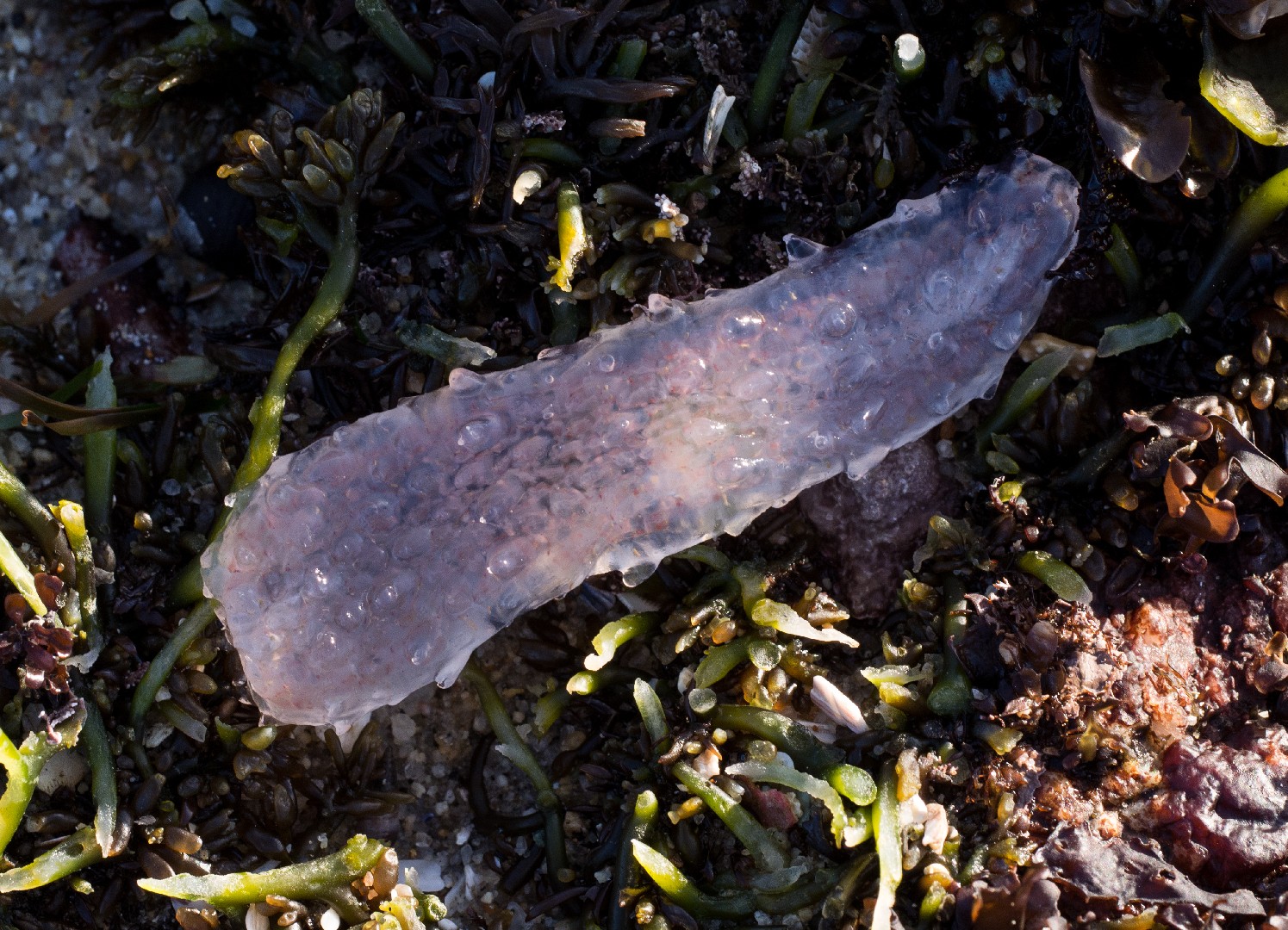Pyrosoma atlanticum
A species of Sea pickles Scientific name : Pyrosoma atlanticum Genus : Sea pickles
Pyrosoma atlanticum, A species of Sea pickles
Botanical name: Pyrosoma atlanticum
Genus: Sea pickles
Content
Description People often ask
 Photo By Rhododendrites , used under CC-BY-SA-4.0 /Cropped and compressed from original
Photo By Rhododendrites , used under CC-BY-SA-4.0 /Cropped and compressed from original Description
A colony of P. atlanticum is cylindrical and can grow up to 60 cm (2.0 ft) long and 4–6 cm (1.6–2.4 in) wide. The constituent zooids form a rigid tube, which may be pale pink, yellowish, or bluish. One end of the tube is narrower and is closed, while the other is open and has a strong diaphragm. The outer surface or test is gelatinised and dimpled with backward-pointing, blunt processes. The individual zooids are up to 8.5 mm (0.33 in) long and have a broad, rounded branchial sac with gill slits. Along the side of the branchial sac runs the endostyle, which produces mucus filters. Water is moved through the gill slits into the centre of the cylinder by cilia pulsating rhythmically. Plankton and other food particles are caught in mucus filters in the processes as the colony is propelled through the water. P. atlanticum is bioluminescent and can generate a brilliant blue-green light when stimulated.
* Disclaimer: The judgment on toxicity and danger is for reference only. We DO NOT GUARANTEE any accuracy of such judgment. Therefore, you SHALL NOT rely on such judgment. It is IMPORTANT TO SEEK PROFESSIONAL ADVICE in advance when necessary.
People often ask
How big does pyrosoma atlanticum get?
Where do you find pyrosoma atlanticum?
What does pyrosoma atlanticum eat?
How deep do pyrosoma atlanticum live in?
Scientific Classification
Phylum
Chordates Class
Thaliaceans Order
Pyrosomatida Family
Pyrosomatidae Genus
Sea pickles Species
Pyrosoma atlanticum